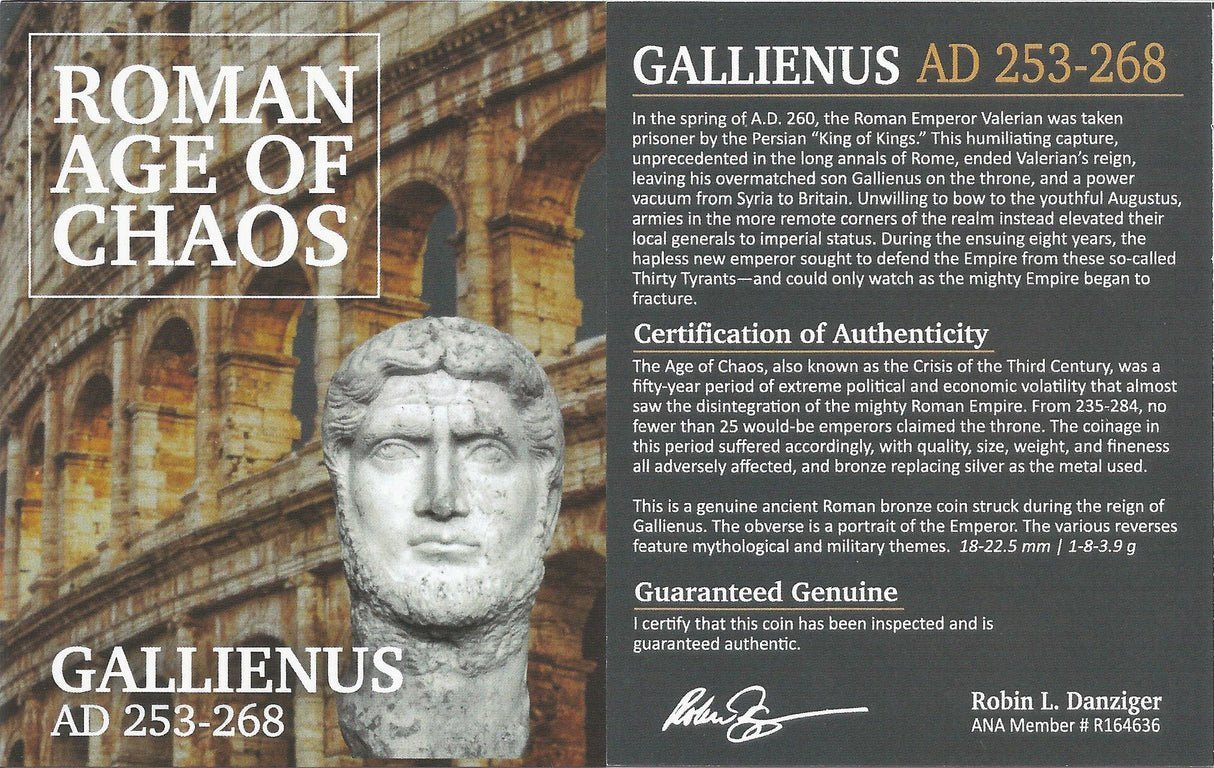 Image 1 of 5
Image 1 of 5

 Image 2 of 5
Image 2 of 5

 Image 3 of 5
Image 3 of 5

 Image 4 of 5
Image 4 of 5

 Image 5 of 5
Image 5 of 5






Aelia Eudoxia Roman Bronze Coin (about 1,565-1,625 years ago)
The coins shown are representative examples of the grade and type, but not the actual specimens for sale. For details on NGC’s grading standards and definitions, please refer to our NGC Grading page.
This is a bronze coin featuring the powerful Byzantine empress Aelia Eudoxia, who wielded significant influence during her brief time as consort to Emperor Arcadius in the Eastern Roman Empire.
Coin Description:
Front side: Portrait of Empress Aelia Eudoxia
Back side: Likely imperial symbols or Victory imagery common on Byzantine coinage
Technical Details:
Bronze composition
Certified by NGC
Minted during 401-460 CE
Historical Significance: Aelia Eudoxia was the wife of the Roman Emperor Arcadius, who ruled the Eastern portion of the empire after it was divided upon the death of Theodosius I. Her path to power was unconventional—her controversial marriage was arranged by a court eunuch called Eutropius, whom she later had executed, demonstrating her political cunning. Despite her short life, Eudoxia wielded considerable influence in the court. Her legacy continued through her son, who took the throne as Theodosius II after Arcadius's death. Eudoxia herself died during childbirth in the year 404 CE. Coins featuring Roman women are relatively rare, making this an important artifact that highlights the occasional prominence of imperial women in Roman history.
The coins shown are representative examples of the grade and type, but not the actual specimens for sale. For details on NGC’s grading standards and definitions, please refer to our NGC Grading page.
This is a bronze coin featuring the powerful Byzantine empress Aelia Eudoxia, who wielded significant influence during her brief time as consort to Emperor Arcadius in the Eastern Roman Empire.
Coin Description:
Front side: Portrait of Empress Aelia Eudoxia
Back side: Likely imperial symbols or Victory imagery common on Byzantine coinage
Technical Details:
Bronze composition
Certified by NGC
Minted during 401-460 CE
Historical Significance: Aelia Eudoxia was the wife of the Roman Emperor Arcadius, who ruled the Eastern portion of the empire after it was divided upon the death of Theodosius I. Her path to power was unconventional—her controversial marriage was arranged by a court eunuch called Eutropius, whom she later had executed, demonstrating her political cunning. Despite her short life, Eudoxia wielded considerable influence in the court. Her legacy continued through her son, who took the throne as Theodosius II after Arcadius's death. Eudoxia herself died during childbirth in the year 404 CE. Coins featuring Roman women are relatively rare, making this an important artifact that highlights the occasional prominence of imperial women in Roman history.






























